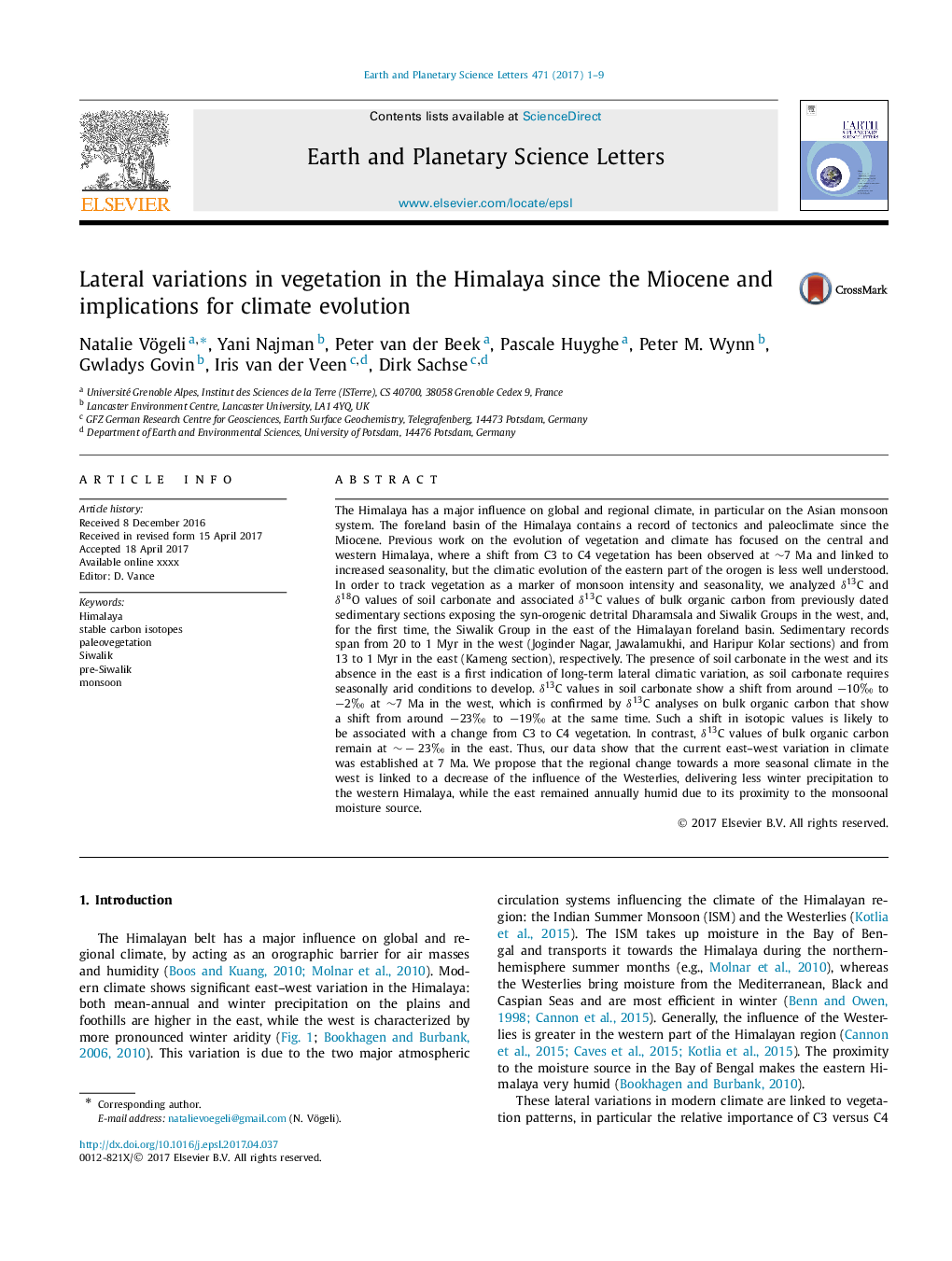| کد مقاله | کد نشریه | سال انتشار | مقاله انگلیسی | نسخه تمام متن |
|---|---|---|---|---|
| 5779769 | 1634685 | 2017 | 9 صفحه PDF | دانلود رایگان |
عنوان انگلیسی مقاله ISI
Lateral variations in vegetation in the Himalaya since the Miocene and implications for climate evolution
ترجمه فارسی عنوان
تغییرات جانبی در گیاهان در هیمالیا از زمان میوسن و پیامدهای تغییرات اقلیمی
دانلود مقاله + سفارش ترجمه
دانلود مقاله ISI انگلیسی
رایگان برای ایرانیان
کلمات کلیدی
هیمالیا، ایزوتوپ کربن پایدار، دوران بارداری، سیوالیک، پیش سویلیک، موزون
موضوعات مرتبط
مهندسی و علوم پایه
علوم زمین و سیارات
علوم زمین و سیاره ای (عمومی)
چکیده انگلیسی
The Himalaya has a major influence on global and regional climate, in particular on the Asian monsoon system. The foreland basin of the Himalaya contains a record of tectonics and paleoclimate since the Miocene. Previous work on the evolution of vegetation and climate has focused on the central and western Himalaya, where a shift from C3 to C4 vegetation has been observed at â¼7 Ma and linked to increased seasonality, but the climatic evolution of the eastern part of the orogen is less well understood. In order to track vegetation as a marker of monsoon intensity and seasonality, we analyzed δ13C and δ18O values of soil carbonate and associated δ13C values of bulk organic carbon from previously dated sedimentary sections exposing the syn-orogenic detrital Dharamsala and Siwalik Groups in the west, and, for the first time, the Siwalik Group in the east of the Himalayan foreland basin. Sedimentary records span from 20 to 1 Myr in the west (Joginder Nagar, Jawalamukhi, and Haripur Kolar sections) and from 13 to 1 Myr in the east (Kameng section), respectively. The presence of soil carbonate in the west and its absence in the east is a first indication of long-term lateral climatic variation, as soil carbonate requires seasonally arid conditions to develop. δ13C values in soil carbonate show a shift from around â10â° to â2â° at â¼7 Ma in the west, which is confirmed by δ13C analyses on bulk organic carbon that show a shift from around â23â° to â19â° at the same time. Such a shift in isotopic values is likely to be associated with a change from C3 to C4 vegetation. In contrast, δ13C values of bulk organic carbon remain at â¼â23â° in the east. Thus, our data show that the current east-west variation in climate was established at 7 Ma. We propose that the regional change towards a more seasonal climate in the west is linked to a decrease of the influence of the Westerlies, delivering less winter precipitation to the western Himalaya, while the east remained annually humid due to its proximity to the monsoonal moisture source.
ناشر
Database: Elsevier - ScienceDirect (ساینس دایرکت)
Journal: Earth and Planetary Science Letters - Volume 471, 1 August 2017, Pages 1-9
Journal: Earth and Planetary Science Letters - Volume 471, 1 August 2017, Pages 1-9
نویسندگان
Natalie Vögeli, Yani Najman, Peter van der Beek, Pascale Huyghe, Peter M. Wynn, Gwladys Govin, Iris van der Veen, Dirk Sachse,
